
Hoshinoya Bali: A rainforest retreat promising honeymoon bliss
When on honeymoon you need to head to the beach, right? Wrong. Pack your bags for the Ubud rainforest, where shared Hindu blessings, green patchworks of rice paddies and sketchy moped rides await...
A cemetery isn’t where I was expecting to spend my honeymoon. In front of me, three cow effigies are on fire. The 12-foot flames are licking gold embellishments and palm leaf blessings up to the sky. Behind me, two small explosions pop in the air as more coffins are set alight. It’s my first hypnotic, if not slightly disconcerting, experience of a Hindu cremation.
Let’s go back to how I ended up here. My husband and I got married four days ago in the Northamptonshire countryside, and decided to leave soggy Britain ASAP. So we booked a trip to the much-hyped Indonesian island of Bali.
To avoid the tourists, we nestled in the rich rainforest at Hoshinoya Bali, set away from the bustling downtown of Ubud in the north. It’s an ideal place to decompress after a 17-hour flight from London and a long weekend with the extended family.
I’ve been to several Hoshinoya hotels before. The Japanese brand has a refreshing knack of incorporating local landscape into its designs. In Kyoto, you sail down the Katsura River on a traditional yakatabune boat to check in; at Mount Fuji you’re cleverly hoodwinked into thinking you’re glamping in a pine forest.
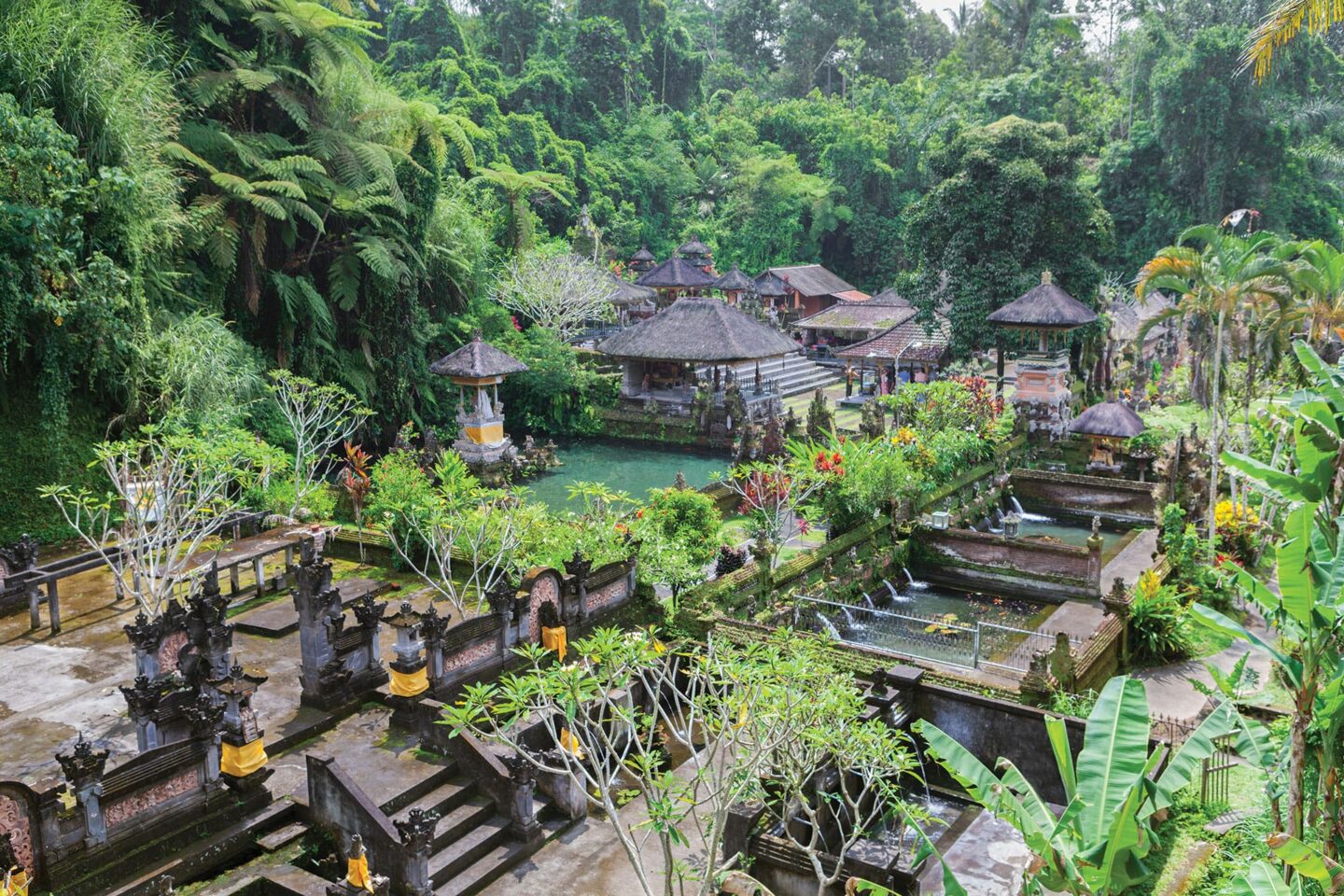
Their soul sister in Bali does not disappoint. The resort is artfully built on one side of a leafy ravine. Relaxation pods seem to float in the trees, where you can take in the views of the adjacent towering palms with a glass of ice white tea. Rushing torrents of the Pakerisan River below filter up as a soft hum. The bedrooms are set back into the hillside, each one joined to a 70-metre central pool that meanders past the balconies like a lazy river.
Our villa, one of 30, is neat and precise, a signature style of Hoshinoya’s Japanese aesthetic. The bed is raised off the floor by only a small wooden platform, and floor-to-ceiling windows wrap around the whole building, with wooden panes reminiscent of traditional koushi-do woodwork.
All we can bear to do on that first afternoon is recline like Antony and Cleopatra on our outdoor gazebo underneath the alang-alang grass thatched roof. Butterflies the size of my palm flitter past and we spot the odd lizard scuttling up a tree.
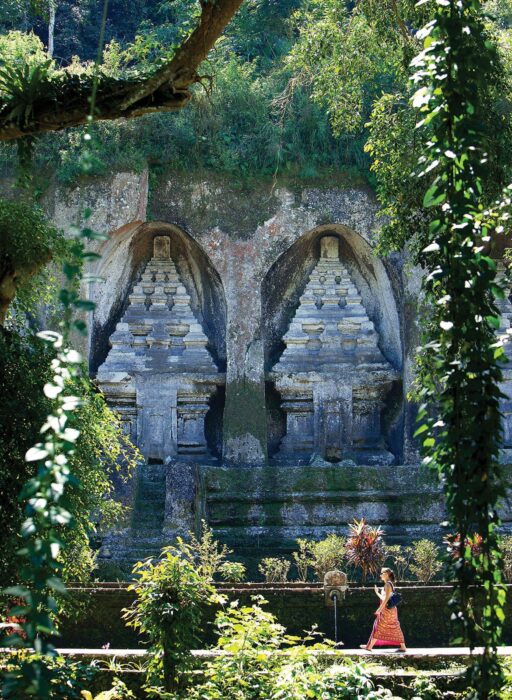
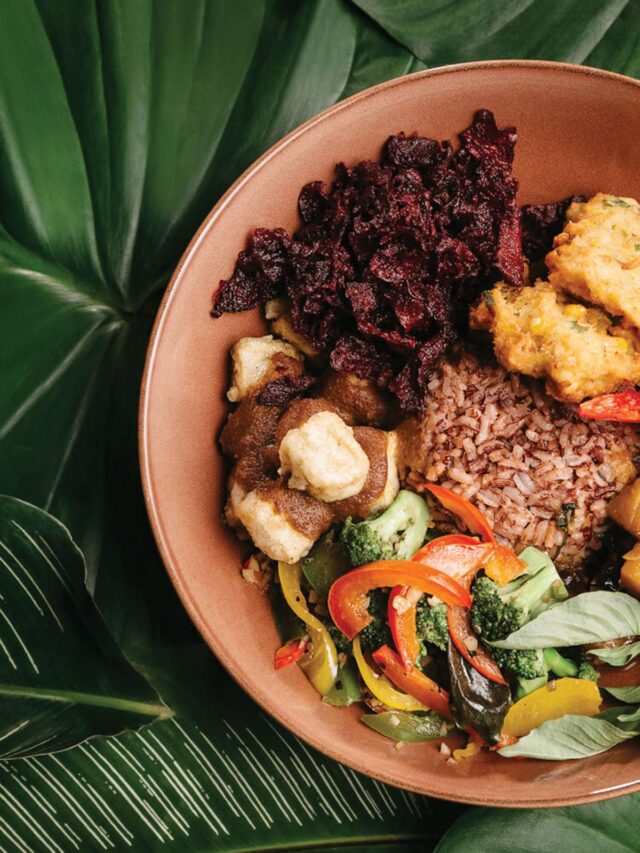
Green rice fields, piled on top of each other like neat layers of cake, have become a tourist sensation in Bali. If you head to the more popular destinations, like the Ceking Rice Terrace, you’ll be swamped by influencers snapping selfies on swings while farmers are hard at work.
To avoid them, we take up the hotel’s complimentary offer of a more intimate tour of local farms. The viridescent shade of the rice is almost unbelievable. Blades of grass poke out of the water, 20 centimetres apart, like flecks of green highlighter. Farmers, ankle-deep, wave as we walk past. They sow the rice by hand into regimented lines and then harvest it with a scythe when it’s ready after around three months. Later, we see a group of women sifting debris from sun-dried grains using handwoven baskets, chucking the rice into the air like a pancake.
As we meander through the system of waterways, we hear bells and cymbals merrily tinkle in the distance. Our guide tells us that it’s coming from the cemetery. The local villagers will be performing a Hindu cremation tomorrow – it only happens every five years and everyone is welcome. Including us.
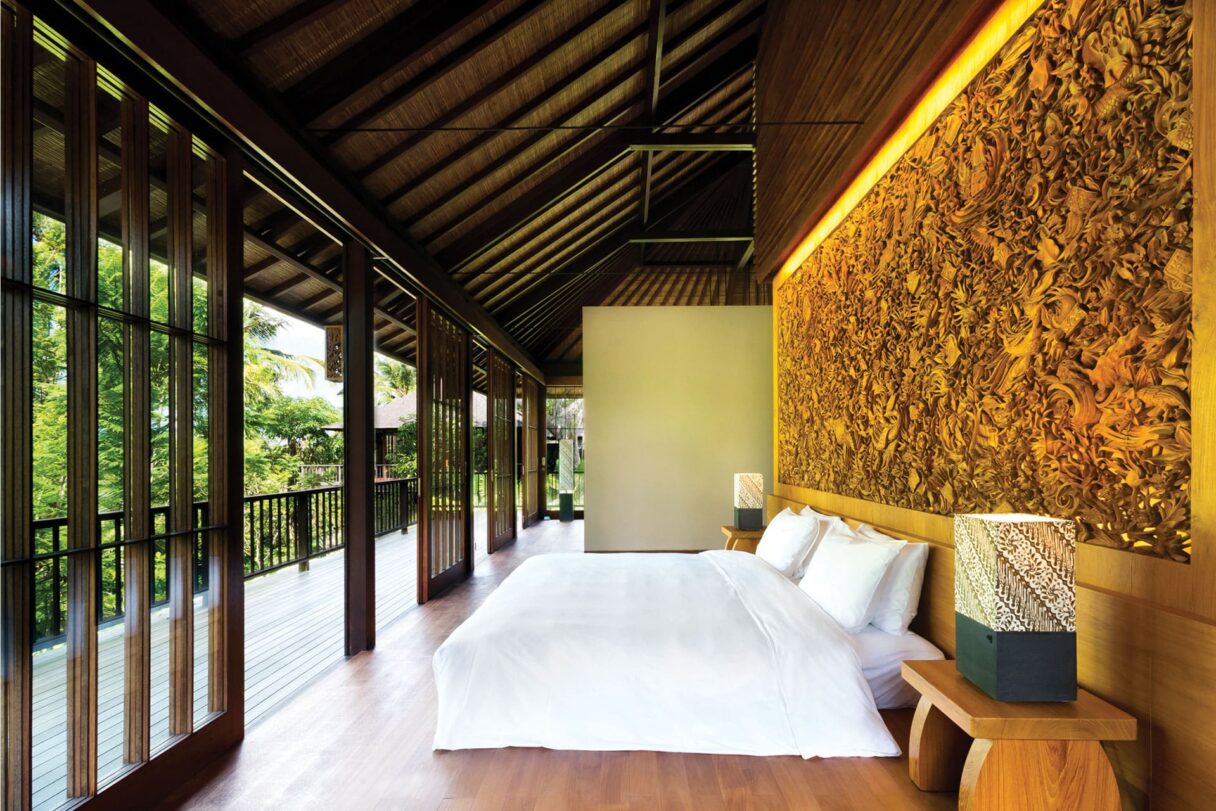
At one o’clock the following day, we follow a small crowd onto the street at the entrance of the cemetery. Women are wearing their Sunday best – a lace kebaya top, a kamben (sarong), and a bright sash around the waist – and are busy making offerings of palm leaves filled with flowers, rice, fruit and incense. The men play instruments or carry and swirl large coffins to the cremation site. These handmade coffins take the shape of cows, bulls or lions set in a wooden tower, each one only as elaborately dressed as the family caste dictates.
Bodies of relatives that have already been buried are exhumed, no matter how recently, and their bones washed. The bones are then wrapped in a white cloth and placed inside the family’s coffin. Blessings are placed on top, and then the whole thing is burnt to set the spirit free. Eventually, families gather up the ashes and sprinkle them into the ocean.
Far from a morbid British funeral, a Hindu cremation seems like a great chance to catch up with friends and family. People chat, eat steamed corn on the cob, or buy freshly-cooked chicken from one-man vendors that have suddenly popped up. We buy some noodles and watch the ashes decorate the sky like confetti.
With an invigorated interest in Hindu culture, we decide to explore further afield that afternoon. The best way to get around Ubud, if you dare, is by motorbike. Cars end up in traffic for hours and there’s little public transport. Hoshinoya organises a bike hire for us, and before you know it, I’m clinging to my husband on the back of a dinky Honda Scoopy.
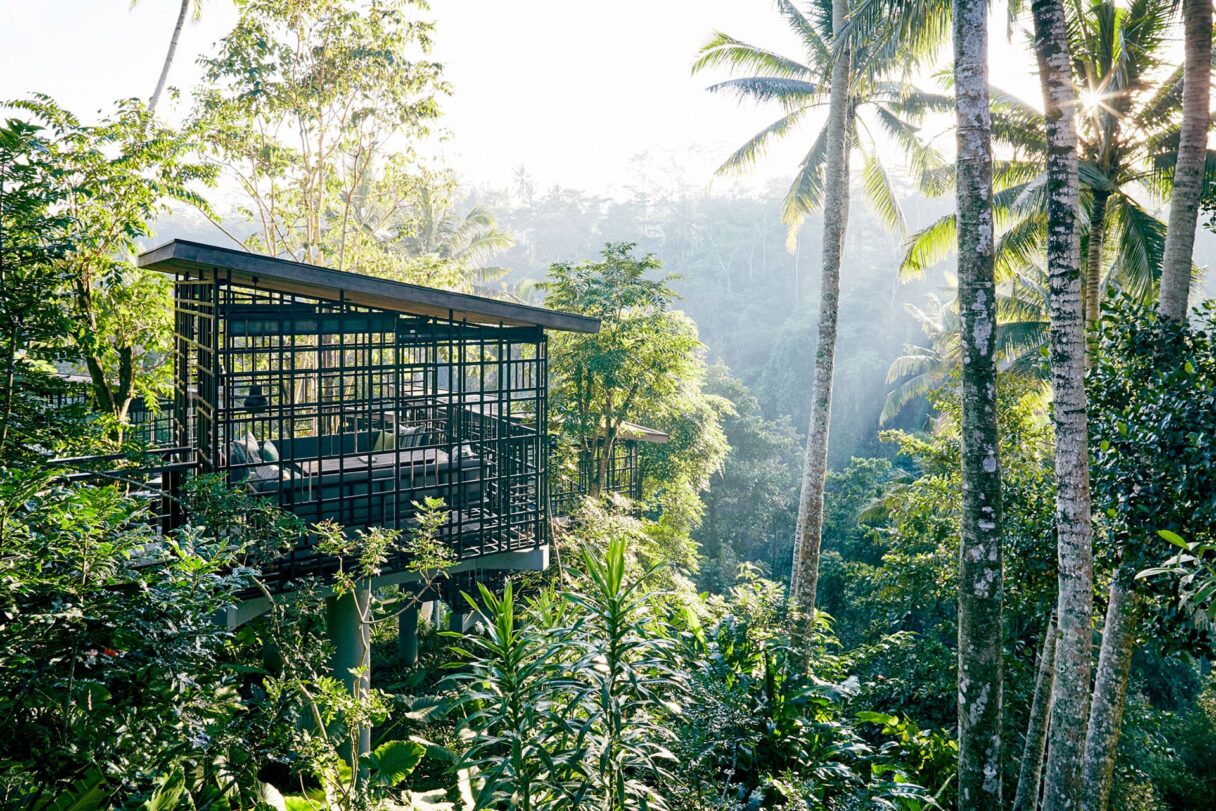
Our first temple stop is the large complex of Tirta Empul, filled with tourists waiting for a blessing. We pass a group of American students wrapped in green robes up to their waste in holy water, hoping for a miracle. The second, Gunung Kawi, is even more impressive. After you reach the bottom of more than 300 steps, there’s a clearing where 10 shrines have been carved into a rockface. It’s like setting foot in Indiana Jones.
Back at Hoshinoya, we fill our rumbling bellies with Japanese and Indonesian dishes. At breakfast, the Indonesian choice is by far the most exciting. It comes on a tray with rice congee (porridge), tum ayam (chicken cooked in banana leaf), a pot of broth and nine condiments. We tinker away mixing our ingredients into bowls like mad scientists; a dash of spring onion here, a boiled egg there.
Most evenings, we venture the half hour into downtown Ubud to find different Balinese restaurants. A firm favourite is the 35-cover Sacred Rice, perched next to a rice field and hidden away from the bustling streets. This intimate setting serves up affordable fine dining, with giant jumbo prawns and tamarind Balinese pork. There’s also Café Wayan & Bakery, which started out as a little bamboo food stall back in the ’80s and is now 10 times the size. Nasi goreng is a must here. It’s a herbed rice dish served with chicken, vegetables and a fried egg on top – and it’s all anyone eats. We wash it down with a bottle of the local Bintang beer.
The most romantic dinner, however, is a 10-course set menu in one of Hoshinoya’s floating gazebos. Plates are filled with bite-size pizzazz, from a Borrowers-sized bowl of fragrant tomato gazpacho to delicate slices of seared tuna in a rich charcoal and mustard sauce. Surrounded only by candles and jungle, it’s hard to beat.
Of course, you should leave plenty of time to disappear into a spa. Bali and massages are synonymous. At Hoshinoya, the spa is at the bottom of the verdant hillside, only accessible by a clunky funicular. An unnecessary addition, but a quirky touch that we try a few times, even without a reservation. A flower-strewn post-massage bath is mandatory, particularly with the real-life wallpaper of the rainforest facing you.
While most people spend their honeymoon sipping mai tais in the Maldives, we pack in jungle adventure. We’re up at 7am saluting the sun at the complimentary yoga session or sampling tropical spices at the wedang tea station. Then there’s traditional dancing to try, Batik dying to do, or a workshop on Balinese crafts. But the highlight for me is waking up each morning to see the sun rise up from behind Mount Batur in a soft, orange haze. It’s a pretty spectacular way to start married life.
Stay at Hoshinoya Bali from 9,800,000 IDR (approx. £500) per room per night (two sharing, room-only), hoshinoya.com
Read more: Why the forgotten island of Nevis should be on your bucket list






